Sourdough potato bread started as a happy accident in my kitchen. I had leftover mashed potatoes and a starter that needed feeding, so I gave it a try. One bake later, my family was hooked. The loaf came out soft, golden, and packed with flavor. It’s now a staple in our weekly routine, whether for breakfast toast or school lunch sandwiches. As a mom of two girls, I love recipes that are simple, practical, and packed with heart—and this one checks every box. I can’t wait for you to try it and make it a favorite in your kitchen too.
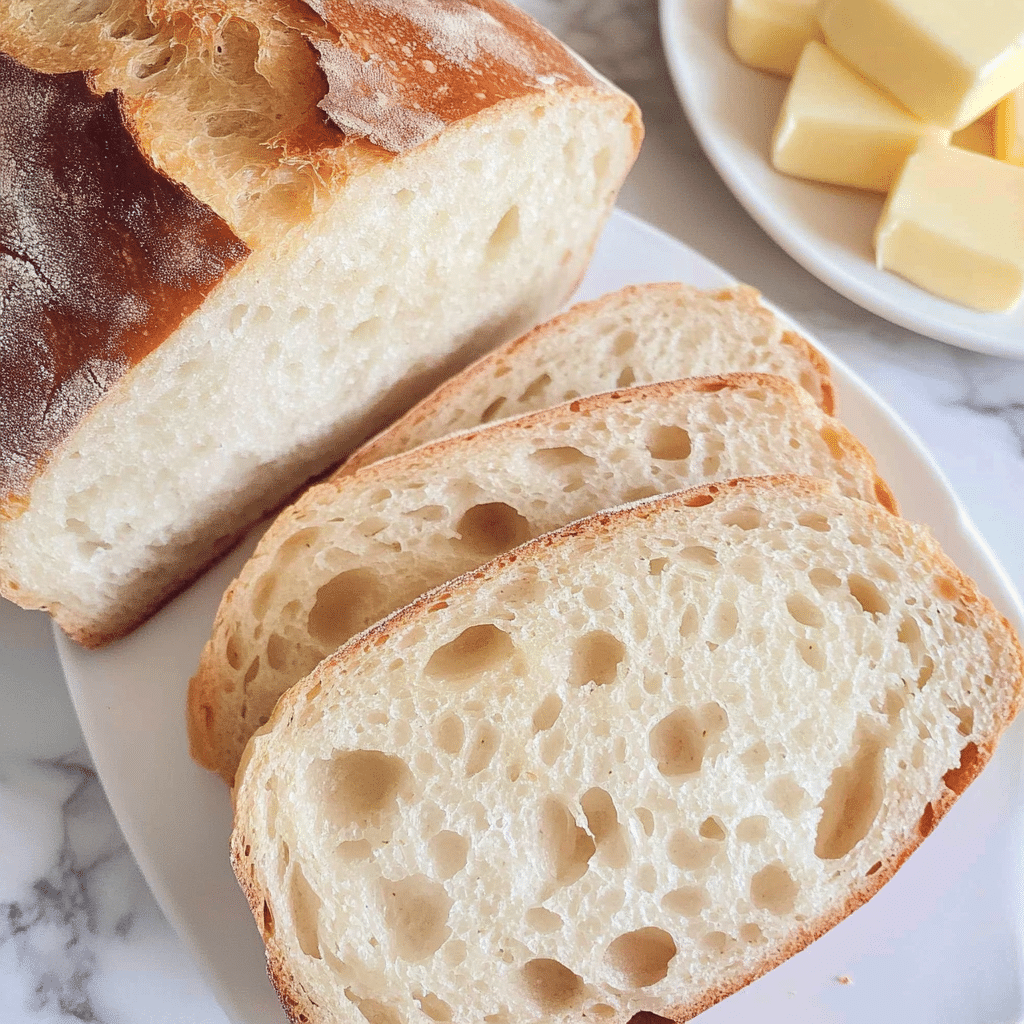
Table of Contents
Why Sourdough Potato Bread Is a Must-Bake in Every Home
Sourdough potato bread quickly became a family favorite in our home, and it all started with leftover mashed potatoes. One cozy afternoon, with just a single russet potato left in the pantry and a bubbly starter on my counter, I decided to experiment. The result was a golden-crusted loaf with the softest crumb I’d ever made. Moist, slightly sweet, and with just enough sourdough tang, it instantly earned its place on our repeat list.
As a mom juggling work, sports schedules, and after-school appetites, I need recipes that deliver comfort and reliability. This one does both. It’s the kind of bread you bake on Sunday and enjoy all week—from toast at breakfast to grilled cheese by Wednesday.
What makes sourdough potato bread so special is its texture. The mashed potato keeps it tender longer than traditional loaves, and it pairs beautifully with savory dishes or a simple smear of butter. Whether you use leftover mash or boil a fresh potato, this bread is an easy, wholesome way to stretch ingredients without sacrificing flavor.
Looking for more ways to put potatoes to work? Serve this with my crispy potato salad or cozy up with a sweet potato taco bowl for the ultimate comfort meal.
Print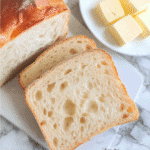
Sourdough Potato Bread Recipe – Soft, Flavorful, and Easy to Make
- Total Time: 9 hours
- Yield: 2 loaves 1x
- Diet: Vegetarian
Description
A soft and golden sourdough potato bread made with mashed potatoes and sourdough starter. Tender crumb, rich flavor, and perfect for toasting or sandwiches.
Ingredients
1 cup mashed potatoes, can use leftover or make with 1 large russet potato
2 cups milk or reserved potato water for dairy-free version
2 teaspoons salt
1/4 cup sugar
4 tablespoons softened butter
1 cup active sourdough starter
5 1/2 cups all-purpose flour
Instructions
1. Peel and chop a large russet potato. Boil for 15–20 minutes until fork tender.
2. Drain and mash well. Let cool slightly.
3. In a stand mixer, combine mashed potato, milk, salt, sugar, butter, starter, and flour.
4. Knead with dough hook until smooth and elastic, about 10–15 minutes.
5. Transfer dough to greased bowl, cover, and bulk ferment for 8 hours.
6. Divide and shape into two loaves. Place into greased pans.
7. Cover and let rise 2–3 more hours until doubled.
8. Bake at 350°F for 45 minutes until golden and hollow-sounding.
9. Let cool completely before slicing.
Notes
You can use potato water to make this loaf dairy-free.
For extra flavor, mix in roasted garlic, rosemary, or cheese.
Freezes well for up to 3 months. Slice before freezing for easy toasting.
- Prep Time: 30 minutes
- Cook Time: 45 minutes
- Category: Bread
- Method: Baking
- Cuisine: American
Nutrition
- Serving Size: 1 slice
- Calories: 190
- Sugar: 2g
- Sodium: 290mg
- Fat: 4g
- Saturated Fat: 2g
- Unsaturated Fat: 1g
- Trans Fat: 0g
- Carbohydrates: 34g
- Fiber: 2g
- Protein: 4g
- Cholesterol: 10mg
Making the Perfect Sourdough Potato Bread
Creating Depth of Flavor and Texture Using Everyday Ingredients
One of the best things about sourdough potato bread is that it takes basic ingredients and turns them into something truly special. You likely already have all the ingredients right in your pantry. And if you don’t? No problem—this recipe is flexible enough to accommodate a few easy swaps.
Start with 1 cup of mashed potatoes—these can be freshly made or leftover from last night’s dinner. If starting from scratch, peel and chop one large russet potato, cover it with water, and boil for 15–20 minutes until fork-tender. Then mash it well without any milk or butter. Be sure to save that starchy potato water—it’s perfect for making this loaf dairy-free while adding extra softness.
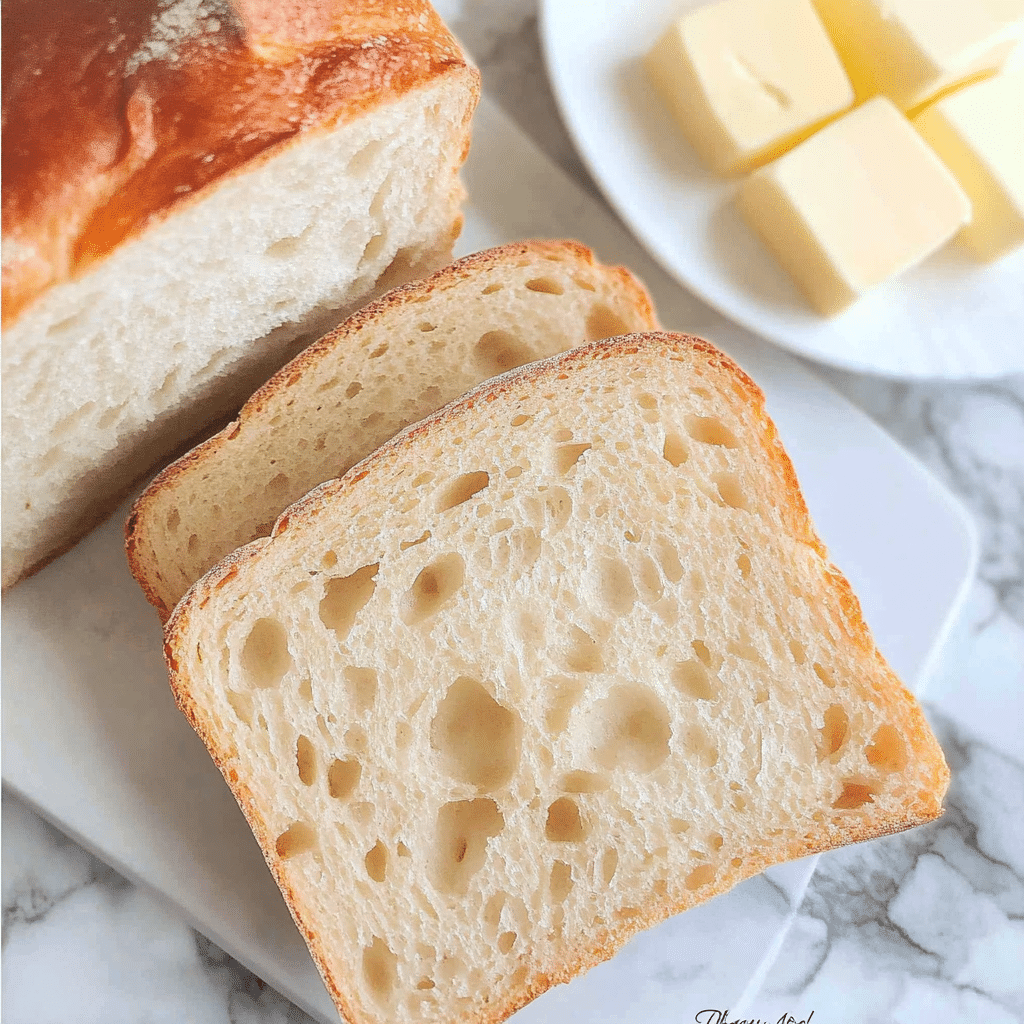
You’ll also need:
- 2 cups of milk or the reserved potato water
- 2 teaspoons of salt
- 1/4 cup sugar for balanced flavor
- 4 tablespoons of softened butter (or swap in olive oil)
- 1 cup active sourdough starter, bubbly and ready to rise
- 5½ cups all-purpose flour
These ingredients work together to create a dough that’s soft, enriched, and easy to handle. The mashed potatoes lock in moisture, while the sourdough starter provides the lift and flavor. It’s a beautiful marriage of hearty and delicate, rustic and reliable.
Pair your prep with a savory side like these crispy zucchini potato muffins or plan to enjoy slices with cottage cheese mashed potatoes for a true carb-lover’s feast.
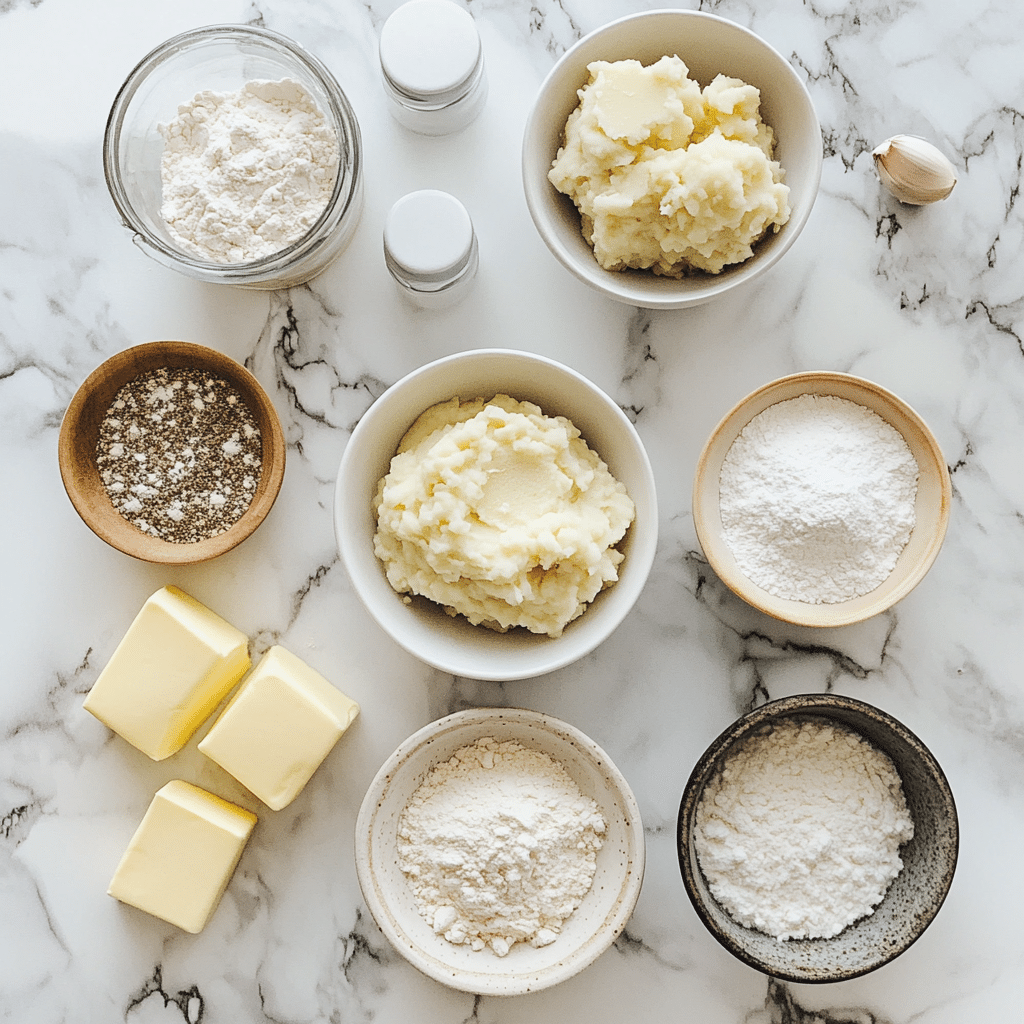
Step-by-Step Instructions for Foolproof Results
- Boil & Mash: Start by peeling and cubing a large russet potato. Add water to the pot and simmer the potatoes for 15 to 20 minutes, or until a fork slides through them with little resistance. Drain and mash thoroughly. Let cool slightly.
- Combine Ingredients: In the bowl of a stand mixer fitted with a dough hook, add the mashed potato, milk (or reserved potato water), salt, sugar, softened butter, active sourdough starter, and flour.
- Knead to Elasticity: Mix on medium speed for about 10 to 15 minutes, until the dough becomes smooth and starts to pull cleanly away from the bowl. To check readiness, perform the windowpane test—gently stretch a small piece of dough; it should thin out without breaking.
- Initial Proof: Place the dough into a lightly oiled bowl, cover it with plastic wrap or a lid, and allow it to ferment in a warm area for roughly 8 hours.
- Divide & Shape: Punch down the dough and divide it into two equal parts. Shape the dough into loaves and transfer them to well-greased baking pans.
- Second Rise: Cover and allow to rise for another 2–3 hours, or until doubled again.
- Bake: Preheat your oven to 350°F. Bake for around 45 minutes, until the crust turns golden and the bottom sounds hollow when tapped.
- Cool & Enjoy: Let cool completely on a wire rack before slicing.
It’s that easy. From fridge to table, you’re about 12 hours away from enjoying fresh, homemade sourdough potato bread that rivals any bakery loaf. Try toasting it and topping it with butter and jam, or serving it with a cozy bowl of soup.
Need a flavorful pairing idea? This crockpot loaded steak and potato bake makes a perfect companion.
Tips, Tricks & Troubleshooting
Secrets to Soft, Moist, and Irresistible Sourdough Potato Bread
If you want to make your sourdough potato bread truly bakery-worthy, a few strategic tips go a long way. This bread is known for its soft interior, slightly chewy crust, and lasting freshness, but those results come from understanding the role of each ingredient and technique.
Moisture is everything in sourdough potato bread. The mashed potato retains hydration like a pro, keeping your loaf soft even days after baking. Just make sure the dough is tacky but not too sticky—this means you’re using just enough flour. Add it slowly during mixing so you don’t lose that perfect softness that makes sourdough potato bread so addictive.
Use the windowpane test to check kneading progress. Stretch a bit of dough gently; if you can see light through it without tearing, your gluten is perfectly developed—this is key to a tender sourdough potato bread loaf with structure and bounce.
Brushing your finished sourdough potato bread with melted butter right out of the oven helps the crust stay soft and adds a glossy, golden finish. Want a crispier crust? Throw a few ice cubes into the bottom of your oven for that classic artisan-style steam effect while baking.
Pair it with bold flavors—this sweet potato taco bowl adds contrast—or serve it alongside crispy zucchini potato muffins for a cozy, savory spread that complements the texture of your sourdough potato bread perfectly.
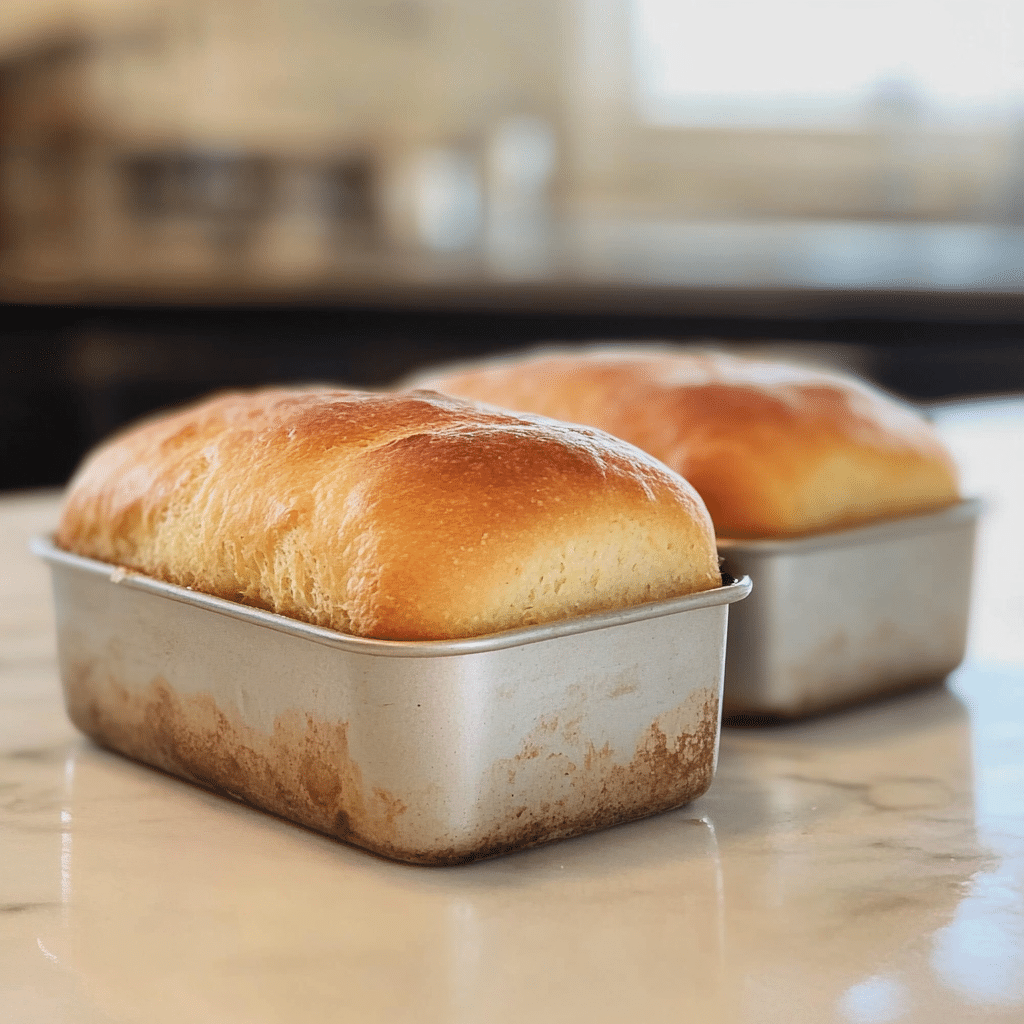
Substitutions & Add-Ins to Make It Your Own
This sourdough potato bread is flexible and easy to customize. Going dairy-free? Just replace the milk with potato water and use olive oil instead of butter. The result is still a delicious sourdough potato bread that’s rich, moist, and full of character.
To switch things up, consider mixing in roasted garlic, caramelized onions, or even some grated cheese directly into the dough. You can even sweeten the loaf by adding cinnamon and raisins, turning your everyday sourdough potato bread into a weekend brunch star.
Or get creative and pair your flavored sourdough potato bread with sweet potato puffs for a satisfying contrast of textures and flavors.
Serving Ideas
How to Enjoy Sourdough Potato Bread Every Day
Freshly baked sourdough potato bread is more than just a side—it’s a centerpiece. The soft crumb and gentle tang pair well with both savory and sweet, making it a versatile staple in any kitchen. Serve warm slices with a pat of butter for breakfast or layer it into gourmet sandwiches for lunch. One of our favorite ways to enjoy it? Lightly toasted, then topped with cream cheese and finished with a touch of honey.
Because this bread stays moist longer than standard loaves, it’s ideal for make-ahead meals or weekly meal prep. Use it for grilled cheese, avocado toast, or cut it into cubes and make homemade croutons. It also freezes beautifully—just slice it ahead of time and store in an airtight freezer bag. Toast straight from frozen whenever you need a quick bite of comfort.
Pair it with family favorites like cottage cheese mashed potatoes for a cozy meal, or serve alongside crispy potato salad during the warmer months for a refreshing contrast. Whether you’re serving up weekday breakfasts or dinner party appetizers, sourdough potato bread adapts beautifully to any table.
Conclusion
Sourdough potato bread is more than just a way to use up leftovers—it’s a soft, flavorful, and deeply satisfying loaf that blends the best of home baking and old-world flavor. With the moisture-retaining power of mashed potatoes and the complex tang of wild fermentation, this bread is both practical and delicious. Whether you’re baking for your family, prepping for the week, or just craving the smell of fresh bread filling your kitchen, this recipe delivers every time.
You now have all the steps, tips, and inspiration you need to bake it with confidence. So get that sourdough starter bubbling and grab a potato or two—your next favorite loaf is waiting.
And if you loved this recipe, be sure to try other Free Dish favorites like sweet potato puffs or our reader-favorite cottage cheese mashed potatoes. Keep it simple, keep it flavorful—and most importantly, keep baking.
For more recipes, follow me on my Facebook page
FAQS
Is potato flake sourdough bread healthy?
Yes, it can be! When made with whole ingredients like real mashed potatoes and an active sourdough starter, potato flake or mashed potato sourdough breads are high in complex carbs and fiber. The fermentation process also supports gut health.
Can you make potato sourdough bread?
Absolutely. In fact, sourdough potato bread is one of the most approachable ways to elevate basic sourdough. Potatoes add natural sugars that feed the wild yeast, resulting in better rise and a softer crumb.
What does potato sourdough taste like?
Expect a subtle tang from the sourdough, balanced by the creamy sweetness of mashed potatoes. The result is a soft, flavorful loaf with a slightly chewy crust—a comforting blend of rustic and refined.
Is sourdough bread still inflammatory?
Sourdough fermentation reduces gluten and phytic acid, making it easier to digest and less likely to trigger inflammation. Adding potatoes further gentles the loaf, though individual reactions may vary. Always check with a nutrition professional if you’re sensitive.
